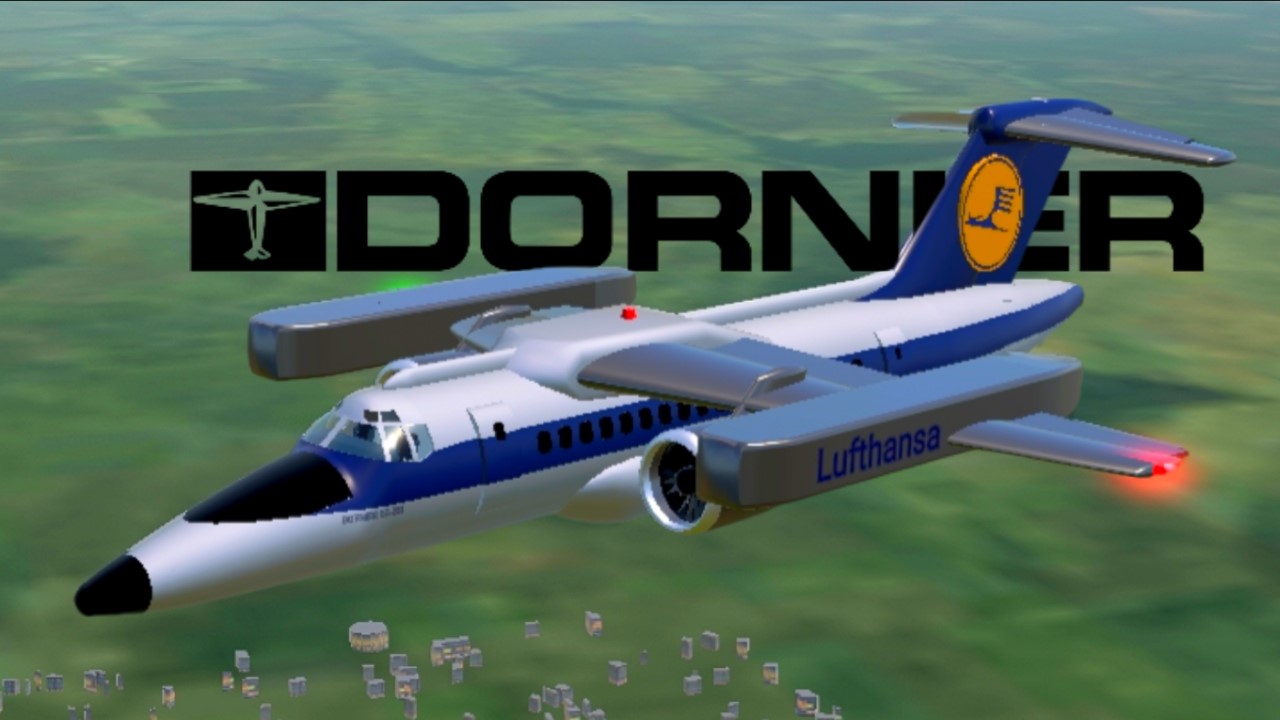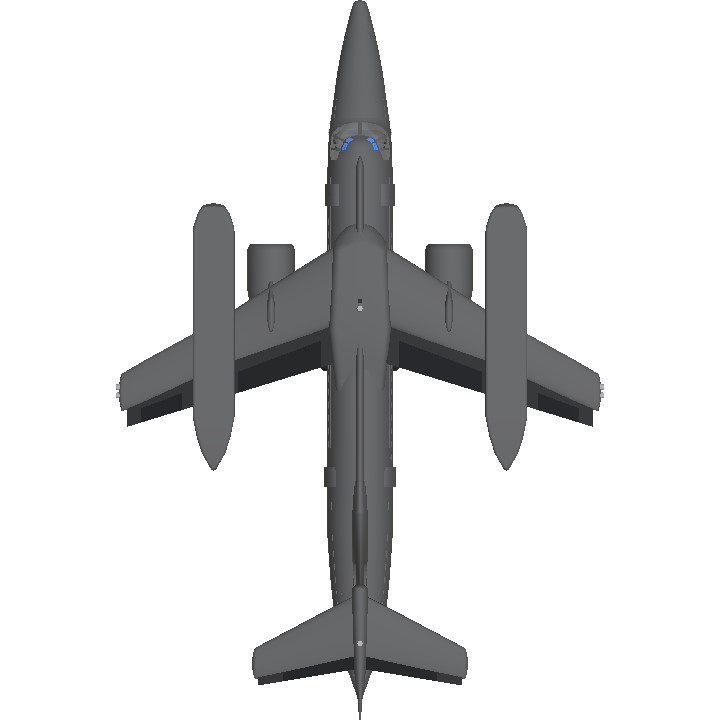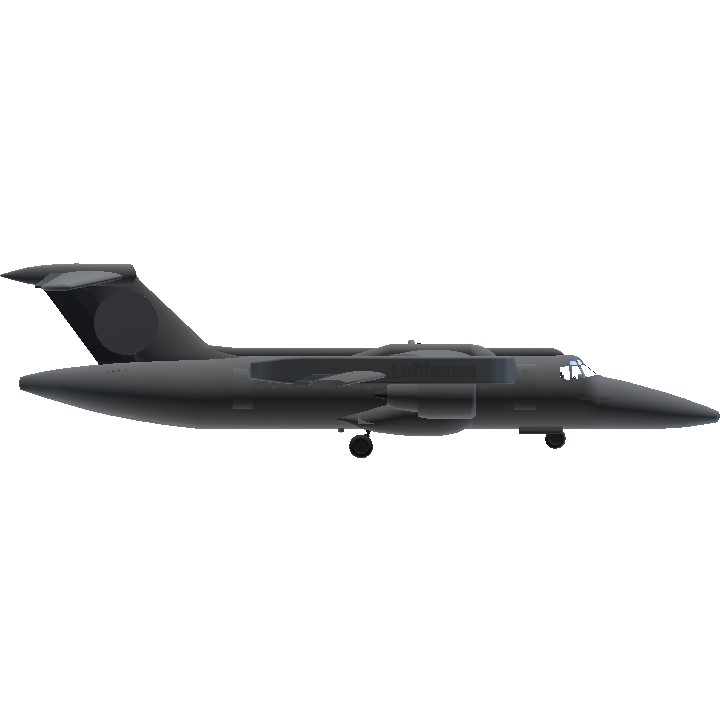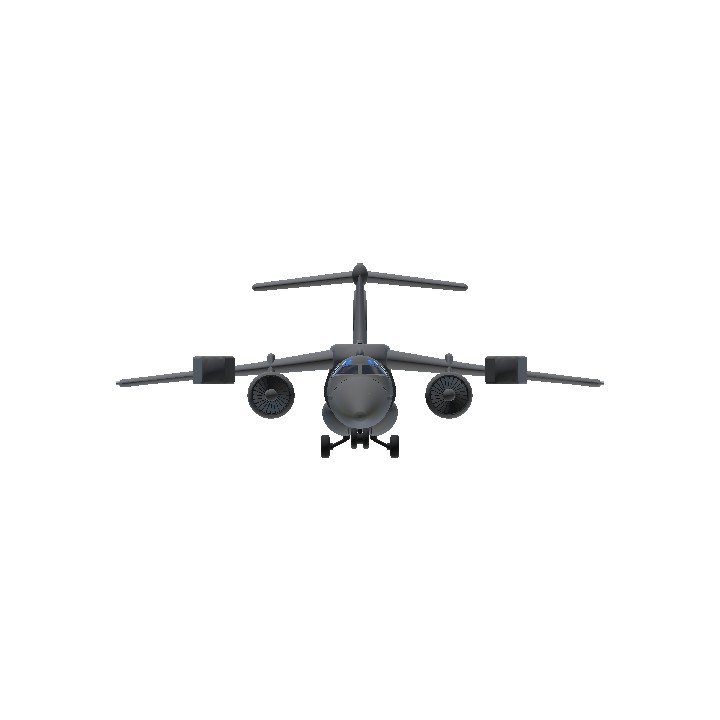Auto Credit Based on cyberpunkchicken27's DORNIER DO-231 (REMASTER)
DORNIER DO-231 FINAL VERSION

DETAILED DRAWINGS of the Dornier Do231—one of the three VTOL transport projects announced by German aircraft manufacturers recently (Flight. November 13, page 723)—have now been released. Based on the company's experimental Do31 prototypes, and with similar podded wingmounted lift engines and separate underwing propulsion engines, the Do231 is designed to carry 80 to 100 passengers.

Proposed powerplants are two Rolls-Royce RB.220 advanced technology turbofans of about 23.8701b rated thrust for propulsion, and no fewer than 12 RB.202 lift engines (of 13,050lb approx. rated thrust) which appear to be compact units with a fan diameter almost double their (axial) length. The wing pods each house four of these latter units, and pairs of additional RB.202s are mounted in the nose and rear fuselage.

All the lift engines tilt between 30 forward and 10° aft. This Dornier project and the other two VTOL transport designs, the Messerschmitt-Bolkow-Blohm Bo 140 and the Hamburger Flugzeugbau Division HFB600 Vertibus. have been submitted for a Federal Defence Ministry design competition which calls for an 80/100-seat VTOL civil/military transport available for service in the late 1970s. Both Lufthansa and the Luftwaffe have been called upon to state their requirements for such a design. Eastern Air Lines recently held a V/STOL briefing and the Do231 is one of the designs they have under consideration.

Nose and tail intakes would open respectively just forward of the pilot's windscreen and—intriguingly—on both sides of the base of the fin and rudder. An APU is apparently fitted in the tail cone. Both wing and tailplane of the Do231 have marked anhedral and the wing centre section sweepback is about 28 deg at quarter chord. Outboard of the lift pods the wing sweep is reduced to about 23 deg. The nose and main undercarriage units are all twin-wheel bogies, the main legs retracting into large underfuselage fairings.

The Do231M military version has a tandem mainwheel undercarriage, with bigger tyres, and a deeper rear fuselage with freight loading doors which would open when the lift engines (raised into the roof in this version) were running. Wing span of the Do231 is 85ft 4in (26m); overall length, 118ft 9in (36.2m): and overall height, 31ft 4in (9.55m). Tile wing area is 1.290 sq ft (120 sq m) and aspect ratio 5.63. Both the civil and military versions will have a maximum take-off weight of 129,000lb and will carry a payload of about 22,000lb. Cruising speed is 485kt, rate of climb at sea level slightly better than 100ft/min and service ceiling 36,400ft. The wing has double-slotted flaps, ailerons and spoilers, and the centre section is built as an integral tank with capacity for nearly 30,000lb of fuel. An alternative STOL version of the Do231 with six to eight lift engines would span 103ft 4in.

AG1: NAVIGATION LIGHTS
VTOL: VTOL+ FLAPS-
Specifications
Spotlights
- SemedianIndustries 6 months ago
- MrsKiwiexe 6 months ago
- 929 6 months ago
- UziDoorman 6 months ago
- Zerkk 6 months ago
- PannerTerkins 6 months ago
- TheNewSPplayer 6 months ago
- Apollo018362 6 months ago
General Characteristics
- Predecessor DORNIER DO-231 (REMASTER)
- Created On Android
- Wingspan 99.8ft (30.4m)
- Length 148.0ft (45.1m)
- Height 39.6ft (12.1m)
- Empty Weight 323,640lbs (146,800kg)
- Loaded Weight 456,516lbs (207,072kg)
Performance
- Power/Weight Ratio 3.455
- Wing Loading 235.6lbs/ft2 (1,150.1kg/m2)
- Wing Area 1,938.0ft2 (180.0m2)
- Drag Points 70239
Parts
- Number of Parts 861
- Control Surfaces 7
- Performance Cost 4,068





Original plane . Great build .
Love it can't play it but it looks nice
¡Muy genial!
Nice and cool!
Cool!